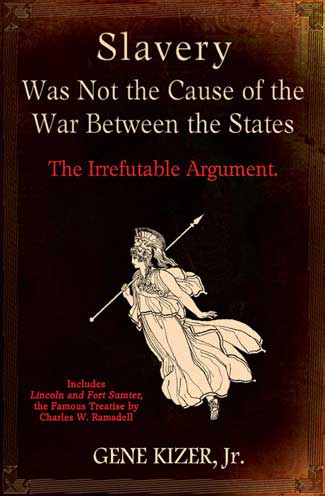TheGreenHornet
Platinum Member
- Nov 21, 2017
- 6,241
- 4,133
- 940
- Banned
- #81
The North does not get to redefine, in the middle of the war, its reason for going to war. What the North proclaimed in the beginning, stands, as its reason for going to war -- and it is unchangeable. War measures halfway through the war, such as the Emancipation Proclamation that freed no slaves (and prevented close to a million slaves from achieving their freedom), have nothing to do with why the North went to war in the first place.
There would have been no American slavery without black tribal chieftains in Africa, and British and Yankee slave traders.
The reason the South gets all the blame is because of a half-century of political correctness in which only one side of the story has been told because, if you tell the Southern side, even in a scholarly manner, you open yourself up to charges of being a racist and member of the KKK who wishes we still had slavery.
Esteemed historian, Eugene D. Genovese, writes:

 www.charlestonathenaeumpress.com
www.charlestonathenaeumpress.com
There would have been no American slavery without black tribal chieftains in Africa, and British and Yankee slave traders.
The reason the South gets all the blame is because of a half-century of political correctness in which only one side of the story has been told because, if you tell the Southern side, even in a scholarly manner, you open yourself up to charges of being a racist and member of the KKK who wishes we still had slavery.
Esteemed historian, Eugene D. Genovese, writes:
To speak positively about any part of this Southern tradition is to invite charges of being a racist and an apologist for slavery and segregation. We are witnessing a cultural and political atrocityan increasingly successful campaign by the media and an academic elite to strip young white Southerners, and arguably black Southerners as well, of their heritage, and therefore, their identity. They are being taught to forget their forebears or to remember them with shame.

The North Did Not Go to War to End Slavery - "Everyone should do all in his power to collect and disseminate the truth, in hope that it may find a place in history and descend to posterity."-Robert E. Lee - Southern History and American History Books
The North Did Not Go to War to End Slavery by Gene Kizer, Jr. If they had, they would have started by passing a constitution amendment abolishing slavery. They did the opposite. They overwhelmingly passed the Corwin Amendment, which left black people in slavery forever, even beyond the reach of...
Last edited:
